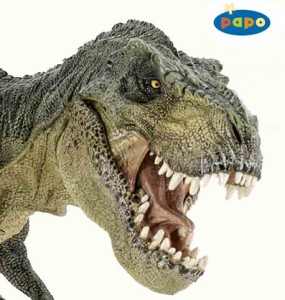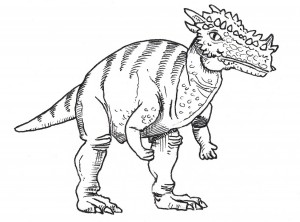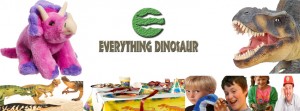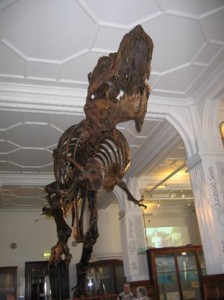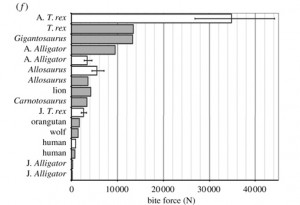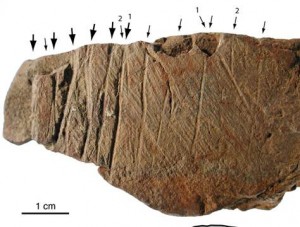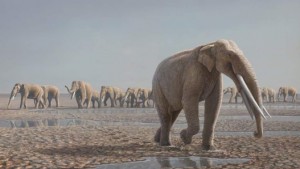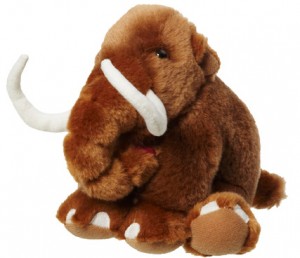Giant Fleas from the Jurassic Sucking the Blood of Dinosaurs (New Research)
Fossilised Fleas Ten Times the Size of a House Flea from the Jurassic
Warning, reading the current edition of “Nature” may lead to an outbreak of scratching as this scientific journal carries details of a new study into the evolution of fleas, with a focus on giant blood-sucking parasites from the Middle Jurassic. Scientists have been studying prehistoric fleas that fed by sucking the blood of dinosaurs.
Dinosaurs
Chinese scientists have been slowly and surely piecing together the origins of the flea family using fossils found in two regions of China, famous for their dinosaur fossils. Professor Huang Diying from Nanjing Institute of Geology and Palaeontology, (Chinese Academy of Sciences) and his colleagues have been “scratching” around in the sedimentary layers of Liaoning Province and in Ningcheng County collecting beautifully preserved, ancient, insect specimens that shed light on the origin and evolution of fleas.
The team have produced a scientific paper which details their studies. It is entitled “Diverse transitional giant fleas from the Mesozoic era of China”, not the catchiest of titles, but we know that many readers will be just “itching” to learn more about the team’s fossil discoveries.
Prehistoric Fleas
Fleas are one of the most dramatically specialised of all the families that make up the Order Insecta. They have reduced wings, a laterally-flattened body and specialised mouth parts for feeding on the blood of mainly mammals (including our own species). There are about 2,500 species or sub-species known and they are present throughout the world. Most fleas are small, usually between 1-3 millimetres in length. Fleas are ectoparasitic insects – insects that feed on other creatures (parasites).
Like most insects, fleas are seldom preserved as fossils. Indeed, take away those fossils of insects preserved inside amber and you are left with a disproportionately sparse fossil record for such an important group of arthropods. Definitive fossil evidence of fleas has been largely confined to fossils of fleas caught in tree sap and preserved as amber.
Dating from the Cenozoic
Most of these fossils date from the Cenozoic, from after the time of the dinosaurs, but in one or two exceptional locations fossils of fleas that once plagued the dinosaurs can be found. The evidence suggesting the origin and early evolution of fleas has not been gathered together and studied, there simply were not enough fossils to study – until now.
One of the few records of a fossilised flea-like creature was unearthed in Australia a few years ago. Found in sediments dated to around 120 million years ago (Early Cretaceous – Aptian faunal stage). The genus was named Tarwinia, but it is difficult to work out the taxonomic relationship between this fossil and extant species.
Chinese Scientists Study Flea Fossils
Over the last few years, the Chinese scientists have found several giant flea fossils dating from the Middle Jurassic (Bathonian faunal stage – Daohugou biota) in Ningcheng County, Inner Mongolia. These insects lived around 165 million years ago. The team have also uncovered the fossils of later specimens of the flea family near to Beipiao City, Liaoning Province. This part of China is famous for its feathered dinosaur fossils and birds. It seems that some of these blood-sucking insects may have adapted to a life living off the feathered dinosaurs. These Early Cretaceous fossils relate to the famous Jehol biota (dated to around 125 million years ago).
This Chinese research provides new insights into the origin and early evolution of fleas and provides clues as to how these insects adapted as dinosaurs, birds and mammals evolved. This new research pushes back in the fossil record the earliest occurrence of fleas (Order Siphonaptera) by about forty million years.
Mesozoic Fleas
The Mesozoic fleas like the sauropods these animals may have fed on; are huge. Their bodies are many times bigger than extant fleas with many approximately 15 mm in length, and some longer than 20 mm, that’s ten times the size of a house flea. As with flea species found today, the ancient females are larger than males.
For example, a flea species from Daohougou is 14 mm for female and only 8 mm for male. They are wingless insects, but more or less dorso-ventrally flattened, their antennae are short and compact with more antennal segments (16-19 segments) than modern fleas (11 segments). These prehistoric giants had a very long piercing siphonate mouthpart, elongate legs armed with various ctenidia (comb-like structures for securing themselves to their host).
Interestingly, these Mesozoic fleas show no signs of the modified back legs that permit these creatures to jump phenomenal distances. It seems the ability to jump, is a Cenozoic development – at least based on the fossil evidence found so far.
Examining the Mouthparts
A close examination of the fossilised mouthparts of these ancient parasites show that many of the earliest forms have long, piercing mouthparts resembling those seen in the Mecoptera, an order of winged, graceful insects that include the scorpion flies. Based on the fossil evidence it could be suggested that fleas should not be classified separately (Siphonaptera), but should be regarded as highly specialised members of the Mecoptera.
The fossils of the fleas when reviewed as a collection provides evidence that fleas readily adapted to take advantage of the food resources available from newly evolved, potential hosts such as the Dinosauria, early mammals and the Aves.
Fossils from Jehol, show fleas armed with various ctenidia on their legs and numerous posteriorly-directed setae (bristles) on their abdomens, indicating an adaption to hosts with hair or fur. From the same strata, a number of mammal species have been described, the flea fossils show adaptations suited to feeding off animals covered in fur or hair. The long siphon seen on some flea fossils dating from this period (120 million years ago) may have evolved so that they could be used to pierce the skin of feathered dinosaurs.
New Chinese Research
This new Chinese study may shed light on an amazingly fossilised insect found preserved in the soft mud of an ancient Mesozoic lake in Russia. A 2.5-cm-long fossil of an insect was discovered in the Cretaceous aged rocks of Transbaikalia (eastern Russia). This creature had no discernible wings, long legs with hooks on the end and a distended mouthpart, like a long proboscis. The body was soft but could have expanded considerably in size, perhaps as a result of feeding on fluids such as blood.
The creature was named Saurophthirus longipes. It has been suggested that this insect specialised in feeding upon the blood of pterosaurs (flying reptiles), a sort of ecological niche similar to that occupied by the bat fleas that feed on bats today. Professor Huang Diying and his colleagues suggest that S. longipes may have been a specialised flea, highly adapted to a life feeding on reptile aviators.
For models and replicas of dinosaurs and pterosaurs: PNSO Age of Dinosaurs Models.
Dinosaurs
The Jurassic-aged fossils may be the earliest evidence of the flea family discovered to date and these fossils taken in context with the Cretaceous-aged finds show that Mesozoic fleas readily adapted to feeding on a number of vertebrate hosts, including in all likelihood the dinosaurs.
In recent years, there has been a number of studies published on fossils of other parasites that may have plagued the Dinosauria and the Pterosauria, blood-sucking lice for example. To read an article on prehistoric lice that may have fed on both feathered and non-feathered dinosaurs: The Itchy and Scratchy Show.


